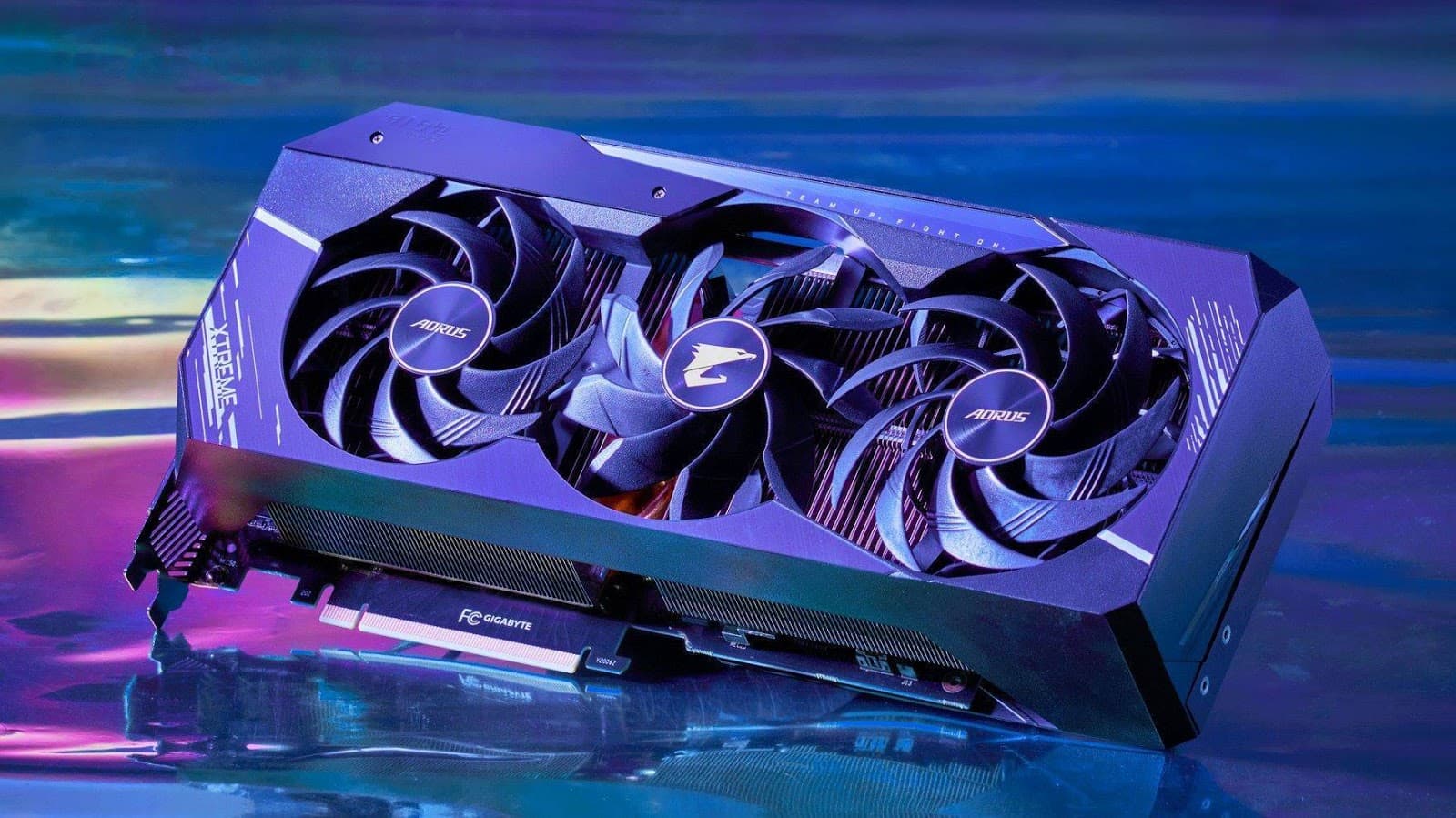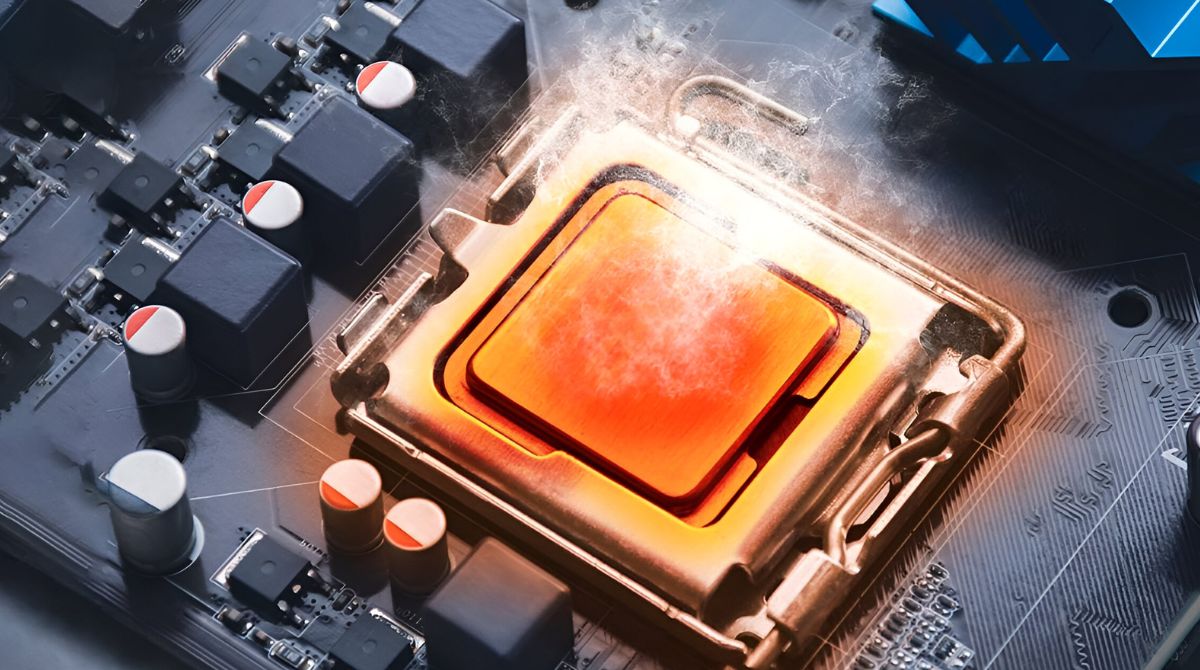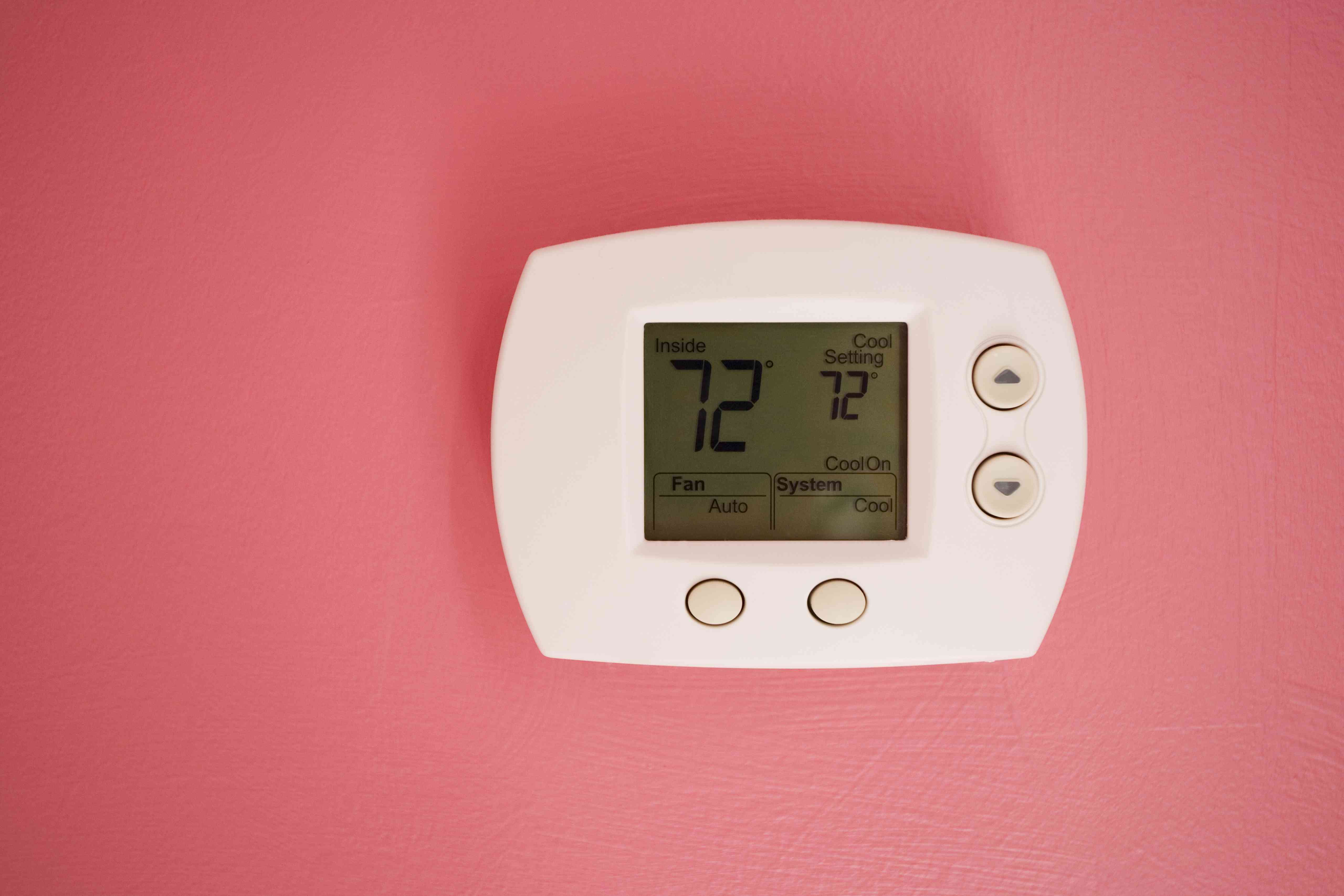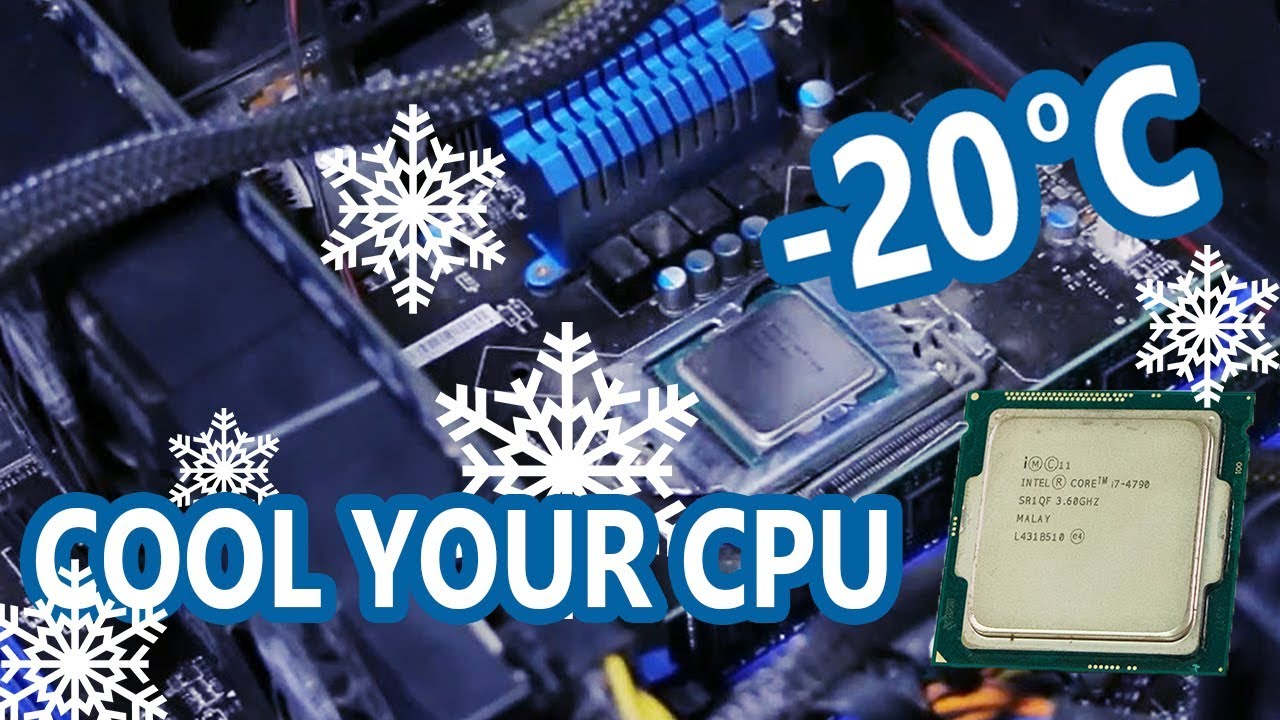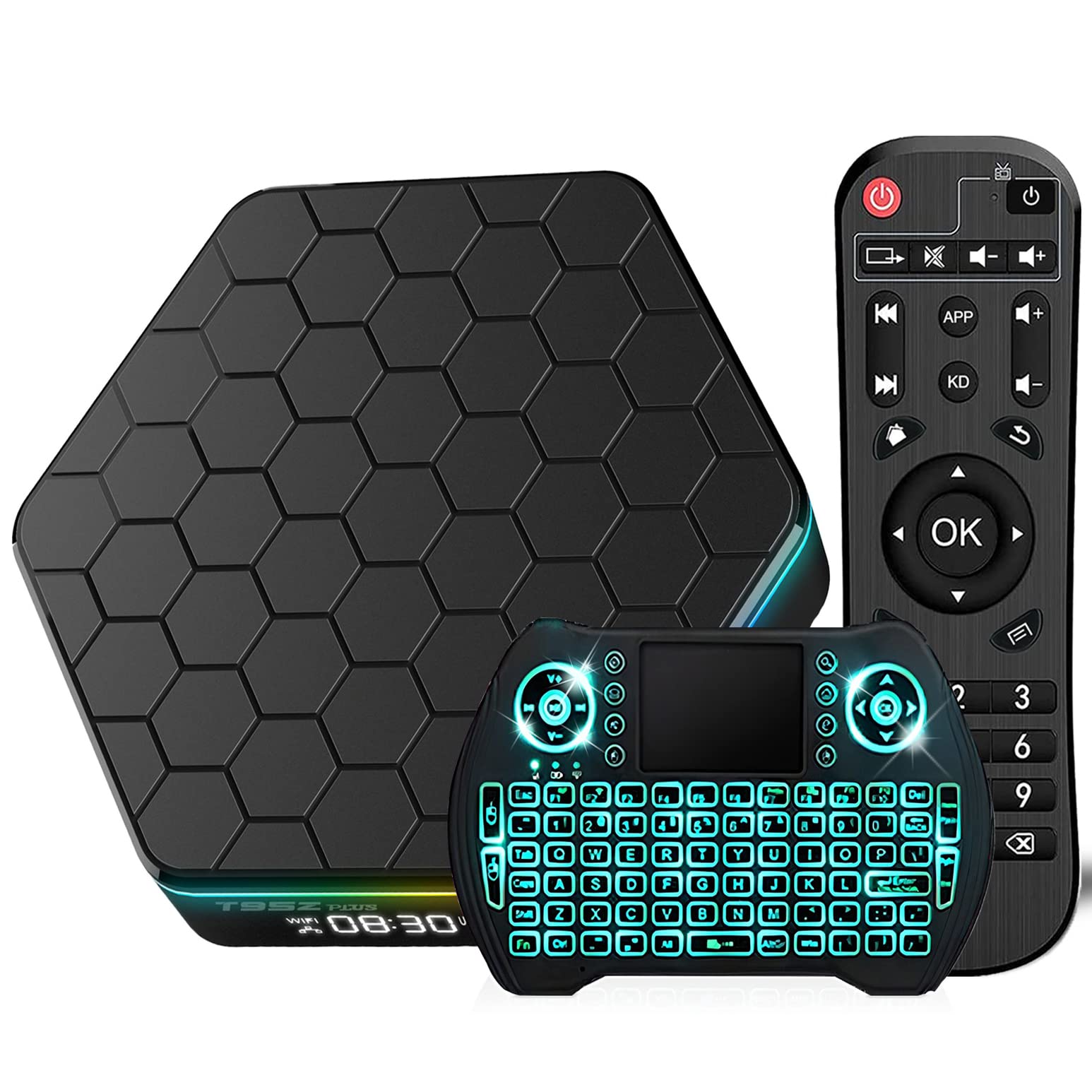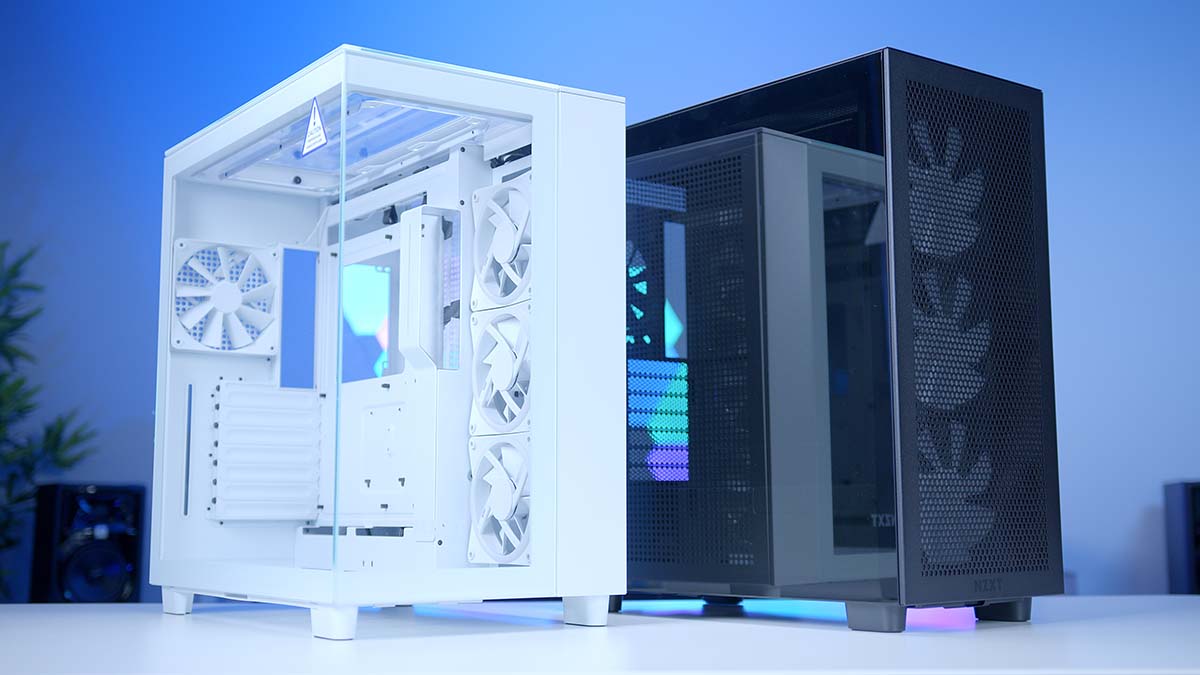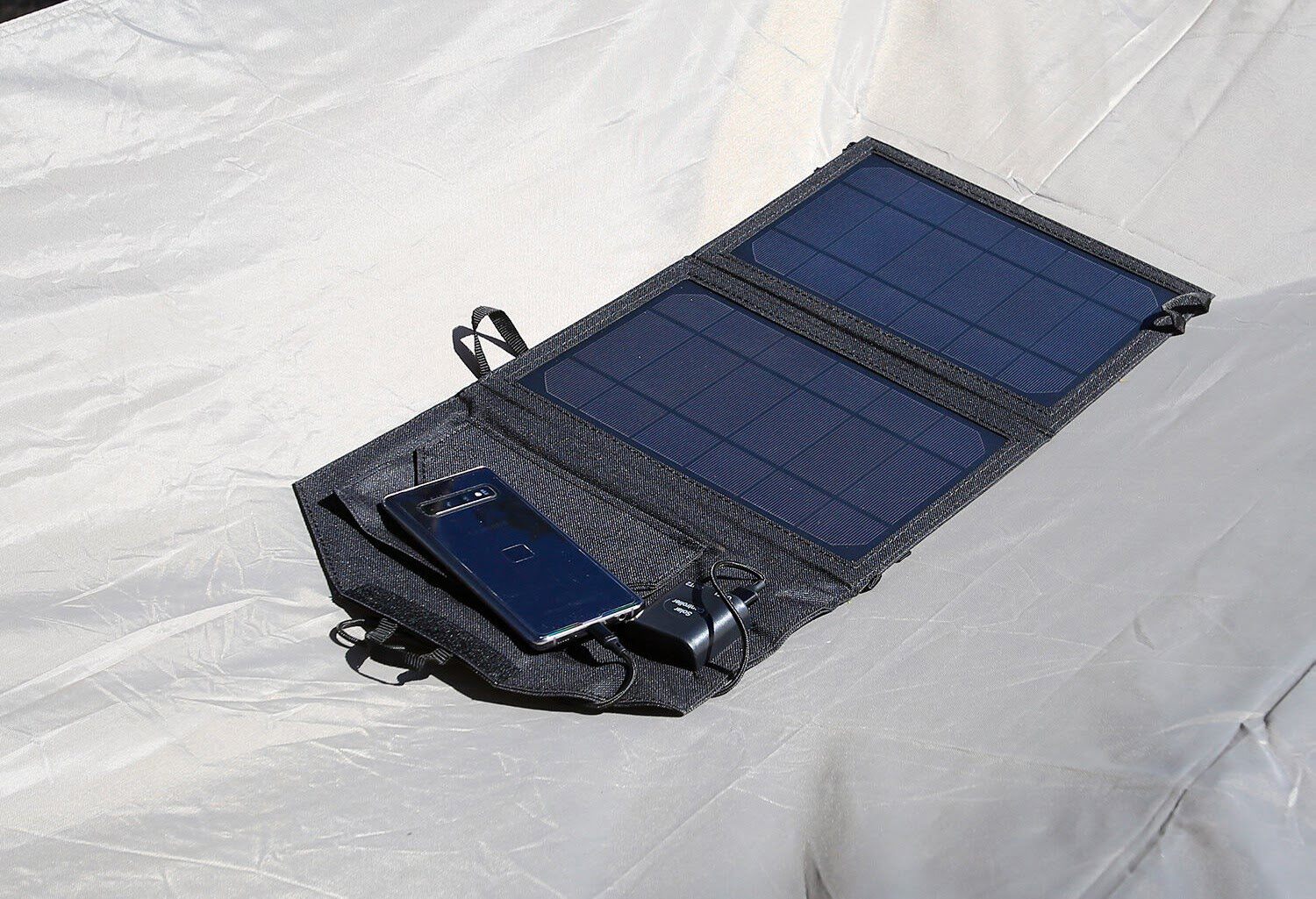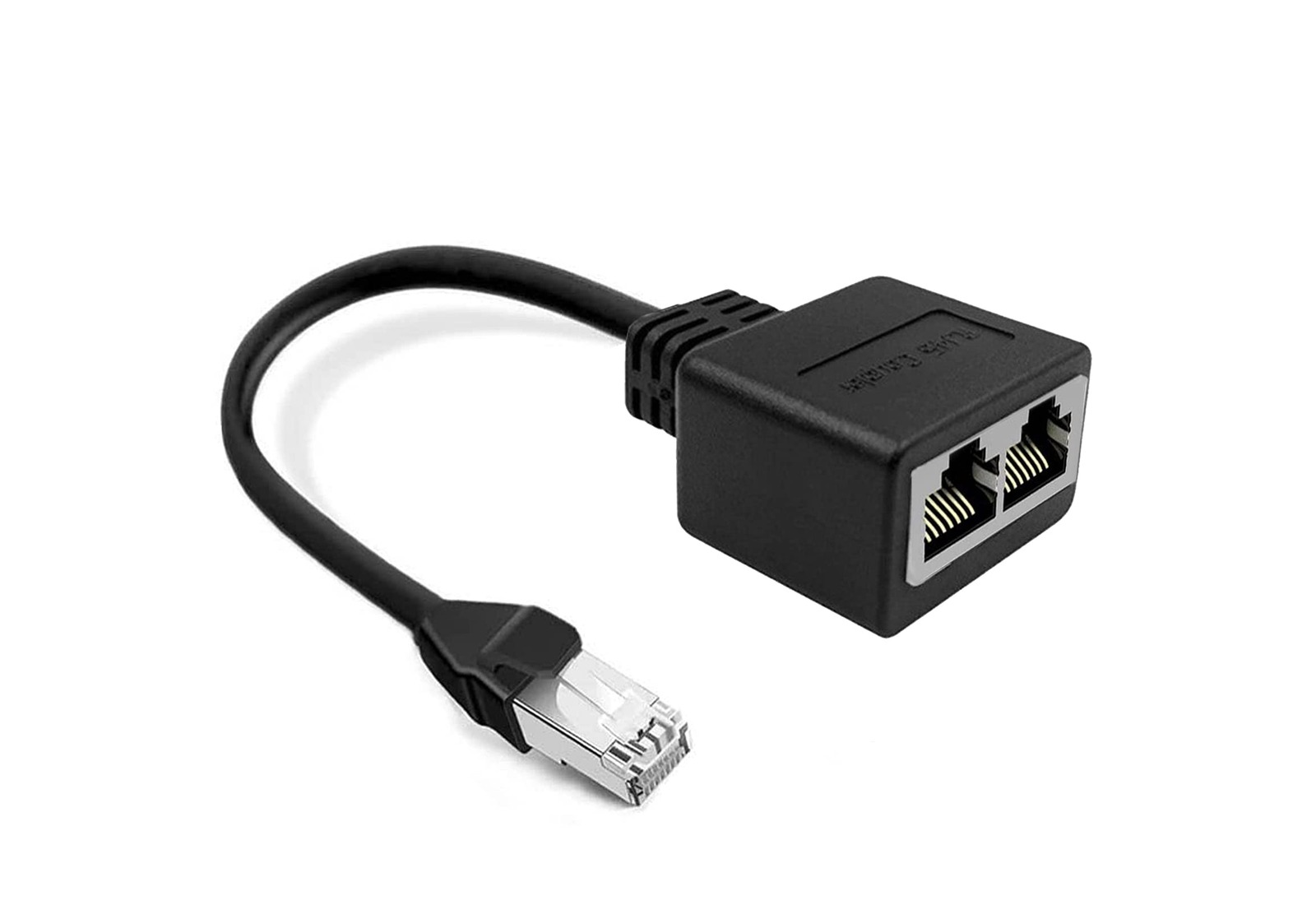Introduction
Welcome to the world of GPUs, where high-performance graphics and blazing fast processing power bring games to life and enable complex computational tasks. But have you ever wondered about the inner workings of these powerful devices? In the realm of GPUs, one crucial factor that significantly affects their performance and lifespan is the junction temperature.
Junction temperature refers to the temperature at the core of the GPU chip itself, where all the magic happens. This temperature plays a vital role in determining the overall efficiency and reliability of the graphics card. Understanding and managing junction temperature is crucial for both gamers and professionals who rely on GPUs for their work.
In this article, we will delve into the concept of junction temperature and explore why it is essential for GPUs. We will also discuss how it is measured, the factors that can affect it, and what constitutes a good junction temperature. Lastly, we will provide some tips on how to keep your GPU’s junction temperature at an optimal level.
So, whether you are a passionate gamer, a graphic designer, or a data scientist, buckle up and get ready to dive deeper into the world of GPUs and junction temperature.
What is Junction Temperature?
Before we delve into the importance of junction temperature for GPUs, let’s first understand what exactly it means. Junction temperature refers to the temperature at the core of the GPU chip, where all the electronic components are located. It is a critical parameter that determines the operating conditions and performance of the graphics card.
As the GPU processes data and performs calculations, it generates heat. This heat must be dissipated to prevent the GPU from overheating, which can lead to performance degradation, stability issues, and potentially permanent damage to the device. Junction temperature is a measure of how hot the core of the GPU chip is during operation.
Typically, the junction temperature is higher than the ambient temperature (the temperature of the surrounding environment). This temperature difference, known as the thermal gradient, allows heat to flow from the GPU chip to the heatsink or cooling solution, where it can be dissipated into the air. The efficiency of this heat dissipation process plays a crucial role in maintaining the junction temperature within safe limits.
Junction temperature is often measured in degrees Celsius (°C) and can vary depending on the GPU model, cooling solution, and workload. Manufacturers provide a maximum junction temperature specification, which indicates the highest safe temperature at which the GPU can operate without any adverse effects. Exceeding this maximum temperature can lead to thermal throttling, where the GPU reduces its performance to prevent overheating.
As a general rule of thumb, the lower the junction temperature, the better. Cooler temperatures allow the GPU to operate more efficiently, resulting in improved performance, stability, and longevity. However, it is important to strike a balance as extremely low temperatures can also have a negative impact on the GPU’s performance and lifespan.
Now that we have a good understanding of what junction temperature is, let’s explore why it is crucial for GPUs in the next section.
Why is Junction Temperature Important for GPUs?
Junction temperature plays a fundamental role in the overall performance, reliability, and lifespan of GPUs. Understanding its importance is crucial for both gamers and professionals working with graphics-intensive applications. Here are several key reasons why junction temperature is important for GPUs:
1. Performance:
High temperatures can negatively impact the performance of a GPU. When the junction temperature rises, the semiconductor materials within the GPU chip experience increased resistance, resulting in slower electrical conductivity. This can lead to reduced clock speeds, lower frame rates in games, and slower rendering times in professional applications. By keeping the junction temperature within optimal levels, users can ensure that their GPUs consistently deliver the best performance possible.
2. Stability:
Excessive heat can cause instability in graphics cards. As the junction temperature rises, electronic components may experience thermal expansion, leading to changes in their electrical characteristics. This can result in erratic behavior, crashes, and system instability. By maintaining a proper junction temperature, users can minimize the risk of stability issues and enjoy a smoother and more reliable computing experience.
3. Longevity:
Heat is one of the primary factors that can shorten the lifespan of a GPU. Prolonged exposure to high temperatures can degrade electronic components over time, reducing their efficiency and reliability. By controlling the junction temperature and ensuring it stays within safe limits, users can extend the lifespan of their GPUs and avoid costly replacements or repairs.
4. Overclocking Potential:
Overclocking is a popular practice among enthusiasts to squeeze more performance out of their GPUs. However, overclocking increases power consumption and generates more heat. Monitoring and managing the junction temperature is crucial when overclocking to prevent damage to the GPU and ensure long-term stability.
5. Energy Efficiency:
A cooler junction temperature can contribute to improved energy efficiency. When a GPU operates at higher temperatures, it requires more power to maintain stable performance. By optimizing the cooling solution and keeping the junction temperature in check, users can reduce power consumption and energy costs without sacrificing performance.
By maintaining an optimal junction temperature, users can unlock the full potential of their GPUs, ensuring optimal performance, stability, longevity, and energy efficiency. Now that we understand the importance of junction temperature, let’s explore how it is measured in the next section.
How is Junction Temperature Measured?
Measuring the junction temperature of a GPU is not a straightforward process as it involves accessing the core of the chip itself. Manufacturers use advanced techniques and embedded sensors to accurately monitor this crucial parameter. Here are several common methods used to measure junction temperature:
1. Thermal Sensors:
Most modern GPUs come equipped with built-in thermal sensors. These sensors are strategically placed within the GPU chip to measure the temperature directly at the junction. The temperature readings from these sensors provide valuable data for monitoring and controlling the junction temperature. Software utilities provided by GPU manufacturers or third-party programs can access these sensors’ data and display the real-time temperature values.
2. Thermal Diodes:
Some graphics cards may utilize thermal diodes, which are small devices integrated into the GPU’s circuitry specifically for temperature measurement. These diodes work based on the principle of temperature-dependent voltage changes. The voltage readings can be converted into temperature readings by using calibration data. Diode temperature measurements are often more accurate than external sensors but require proper calibration to ensure reliability.
3. Infrared (IR) Thermography:
Infrared thermography is an advanced technique used to measure surface temperatures by detecting the thermal radiation emitted by objects. Although it cannot directly measure the junction temperature, it can provide valuable insights into the overall thermal behavior of the GPU. By analyzing the thermal images captured using an infrared camera, it is possible to identify hotspots and areas of concern that may require additional cooling.
4. Simulation and Modeling:
In addition to direct temperature measurements, manufacturers also use simulation and modeling techniques to estimate the junction temperature of a GPU. They take into account factors such as power consumption, heat dissipation, and thermal characteristics of the chip to create virtual temperature profiles. While these models may not provide precise temperature readings, they offer valuable insights during the design and validation stages of a graphics card.
It is important to note that measuring the junction temperature accurately requires specialized equipment and software. For everyday users, relying on the temperature readings provided by software utilities or manufacturer tools is sufficient for monitoring and managing the GPU’s temperature.
Now that we know how junction temperature is measured, let’s explore the factors that can affect this crucial parameter in the next section.
Factors Affecting Junction Temperature
The junction temperature of a GPU is influenced by various factors, including the design, environment, and usage conditions. Understanding these factors is essential for effectively managing and controlling the temperature. Here are some key factors that can affect the junction temperature:
1. Cooling Solution:
The effectiveness of the cooling solution directly impacts the junction temperature. GPUs commonly utilize cooling solutions such as heat sinks, fans, and liquid cooling systems. The quality, design, and efficiency of these cooling components play a vital role in dissipating the heat generated by the GPU. A well-designed and properly functioning cooling solution can significantly lower the junction temperature, while inadequate cooling can result in higher temperatures and reduced performance.
2. Thermal Interface Material (TIM):
The thermal interface material is the material that sits between the GPU chip and the cooling solution. It helps to efficiently transfer heat from the chip to the heatsink. The type and quality of the TIM can impact thermal conductivity and thus the junction temperature. High-quality thermal compounds or pads with good conductivity can help dissipate heat more effectively, resulting in lower temperatures.
3. Ambient Temperature:
The ambient temperature of the environment where the GPU is operating can affect the junction temperature. Higher ambient temperatures limit the effectiveness of the cooling solution, making it harder for the GPU to dissipate heat. In a hot environment, the junction temperature is more likely to rise, potentially compromising performance and stability. Keeping the room temperature cool can assist in maintaining a lower junction temperature.
4. Workload Intensity:
The intensity of the workload the GPU is subjected to can significantly impact its temperature. Running demanding games or applications that push the GPU to its limits generates more heat. GPUs with higher clock speeds and power consumption tend to produce more heat. It is crucial to consider the capabilities of your GPU and match it with the workload to prevent excessive heat generation and maintain an optimal junction temperature.
5. Overclocking:
Overclocking, the practice of increasing the clock speeds and voltages of a GPU beyond its default settings, can lead to higher junction temperatures. Overclocking increases the power consumption and consequently the heat output of the GPU. Proper cooling and monitoring are required when overclocking to ensure that the junction temperature remains within safe limits to avoid performance degradation and potential damage to the GPU.
By considering these factors and implementing appropriate measures, users can effectively manage the junction temperature of their GPUs and ensure optimal performance and longevity. Now that we understand the factors affecting junction temperature, let’s explore what constitutes a good junction temperature for a GPU in the next section.
What is a Good Junction Temperature for a GPU?
When it comes to determining a good junction temperature for a GPU, there is no one-size-fits-all answer. The ideal junction temperature can vary depending on the specific GPU model, manufacturer specifications, and cooling capabilities. However, as a general guideline, keeping the junction temperature below certain thresholds is recommended to ensure optimal performance and longevity.
Manufacturers typically provide a maximum junction temperature specification for their GPUs. Exceeding this maximum temperature can lead to thermal throttling, where the GPU reduces its performance to prevent overheating and potential damage. Staying within the manufacturer’s recommended limits ensures stable operation and preserves the lifespan of the GPU.
As a general rule of thumb, a good junction temperature for a GPU is typically below 85°C under heavy loads. However, it is important to note that this value can vary depending on the specific GPU architecture and cooling solution. Some high-performance GPUs may have higher thermal thresholds, while more energy-efficient GPUs may have lower ones.
Additionally, users who engage in overclocking should aim for lower junction temperatures to provide a margin of safety. Overclocking increases power consumption and generates more heat, so it is crucial to ensure that the cooling solution is sufficient to handle the increased thermal load and keep the junction temperature at a safe level.
Ultimately, maintaining a consistently low and stable junction temperature is crucial for achieving optimal performance and longevity. Regularly monitoring the temperature using software utilities provided by the GPU manufacturer or other third-party tools can help ensure that the GPU is operating within the desired temperature range.
By taking into account the manufacturer’s specifications, cooling capabilities, and specific workload requirements, users can determine what constitutes a good junction temperature for their specific GPU. Now, let’s explore some effective ways to keep the junction temperature of a GPU at an optimal level.
How to Keep Junction Temperature at an Optimal Level
Maintaining the junction temperature of a GPU at an optimal level is crucial for maximizing performance, stability, and lifespan. Here are some effective ways to keep the junction temperature of your GPU in check:
1. Ensure Proper Ventilation:
Proper airflow is essential for efficient heat dissipation. Make sure that your computer case has adequate ventilation and that the intake and exhaust fans are clean and functioning correctly. Remove any obstructions that may block the airflow around the GPU, such as cables or dust buildup.
2. Invest in Effective Cooling Solutions:
Consider upgrading your GPU’s cooling solution if the stock cooler is not sufficient. Aftermarket coolers, such as high-performance air coolers or liquid cooling systems, can significantly improve heat dissipation and keep the junction temperature lower.
3. Apply High-Quality Thermal Paste:
Thermal paste is crucial for ensuring optimal heat transfer between the GPU chip and the cooling solution. Applying a high-quality thermal paste can improve the contact and conductivity, resulting in better heat dissipation and lower junction temperatures.
4. Maintain a Clean System:
Dust and dirt accumulation can hinder airflow and insulation, leading to higher temperatures. Regularly clean your computer’s components, especially the fans, heatsinks, and filters, to prevent dust buildup and maintain optimal cooling efficiency.
5. Avoid Overclocking Beyond Safe Limits:
While overclocking can provide performance boosts, it also increases power consumption and heat generation. Ensure that you stay within safe limits and monitor the junction temperature closely when overclocking. If temperatures rise too high, consider adjusting the clock speeds or voltage to maintain a safe junction temperature.
6. Optimize Fan Curves and Speeds:
Most GPUs allow you to customize the fan curve and speed settings. Adjusting these settings can help strike a balance between cooling performance and noise levels. Increasing the fan speeds can enhance heat dissipation but may result in increased noise levels. Finding the right balance is crucial for keeping the junction temperature at an optimal level.
7. Keep Ambient Temperature Cool:
Try to maintain a cool environment for your computer system. Avoid placing the computer in direct sunlight or near heat sources. Consider using air conditioning or additional fans in the room to lower the ambient temperature, which can contribute to lower junction temperatures.
By implementing these strategies and monitoring the junction temperature regularly, you can effectively keep your GPU’s junction temperature at an optimal level, ensuring optimal performance, stability, and longevity.
Conclusion
Junction temperature is a crucial parameter that significantly impacts the performance, stability, and longevity of GPUs. It refers to the temperature at the core of the GPU chip and plays a vital role in determining the operating conditions and efficiency of the graphics card. Understanding and managing the junction temperature is essential for both gamers and professionals who rely on GPUs for their work.
In this article, we explored the concept of junction temperature and why it is important for GPUs. We learned that high temperatures can negatively affect performance, stability, and lifespan, while lower temperatures offer improved efficiency and reliability.
We discussed how the junction temperature is measured through thermal sensors, thermal diodes, infrared thermography, and simulation modeling. These techniques allow users to monitor and control the junction temperature effectively.
We also explored the factors that can affect the junction temperature, including the cooling solution, thermal interface material, ambient temperature, workload intensity, and overclocking. By considering these factors and implementing appropriate measures, users can manage and control the junction temperature of their GPUs.
Moreover, we determined that a good junction temperature for a GPU is typically below 85°C under heavy loads. However, it is important to refer to the manufacturer’s specifications and cooling capabilities to determine the specific optimal range for your GPU.
Finally, we provided some practical tips on how to keep the junction temperature at an optimal level. These include ensuring proper ventilation, investing in effective cooling solutions, applying high-quality thermal paste, maintaining a clean system, avoiding excessive overclocking, optimizing fan curves and speeds, and keeping the ambient temperature cool.
By following these guidelines and monitoring the junction temperature regularly, users can ensure that their GPUs operate at their best, delivering optimal performance, stability, and longevity.
So, whether you are a passionate gamer, a graphic designer, or a professional utilizing GPUs for complex computations, understanding and managing the junction temperature is essential for unleashing the full potential of your GPU and ensuring a smooth and reliable computing experience.







